By Philip C. Marshall
Informed by research and demonstrated need, the New York City Elder Abuse Center (NYCEAC) created a unique Elder Abuse Helpline for Concerned Persons, a non-emergency phone and email service for a concerned person—a family member, friend, or neighbor of an elder abuse victim (residing in New York City).
Informed by research and demonstrated need, the New York City Elder Abuse Center (NYCEAC) created a unique Elder Abuse Helpline for Concerned Persons, a non-emergency phone and email service for a concerned person—a family member, friend, or neighbor of an elder abuse victim (residing in New York City).
Below,
I provide the persepective of a concerned person—a family member—to
underscore the need and opportunity to engage concerned persons, more. I
acted to save my grandmother from abuse and exploitation by her only
child, my father.

Reasons
To cut to the chase, I feel there are three reasons I am invited to advocate for elder justice:
- I am the grandson of a famous philanthropist who was abused by her only child;
- I am a concerned person who acted to save an older adult from abuse;
- We were successful due to the efforts of those in my grandmother’s circle of support.
But…
- Most people do not have a famous grandmother
- Most people do not act, against abuse
- And, if they do, most people never share such success
What
is considered less than our success is the trauma that took its toll on
each of us throughout our ordeal, as concerned persons.
The same trauma is suffered by an estimated 73 million concerned persons across America. (Breckman, et al. 2018)
Concerned
persons are (non-abusing) family, friends, and neighbors who serve as
informal network supporters for older adults suffering from abuse and
financial exploitation.
As informal network supporters there is nothing ‘informal’ about the stress endured.
A concerned person is a supporting actor helping an older adult maintain the lead role in their own lives.
Explicitly, concerned persons, as supporting actors, need support, too.
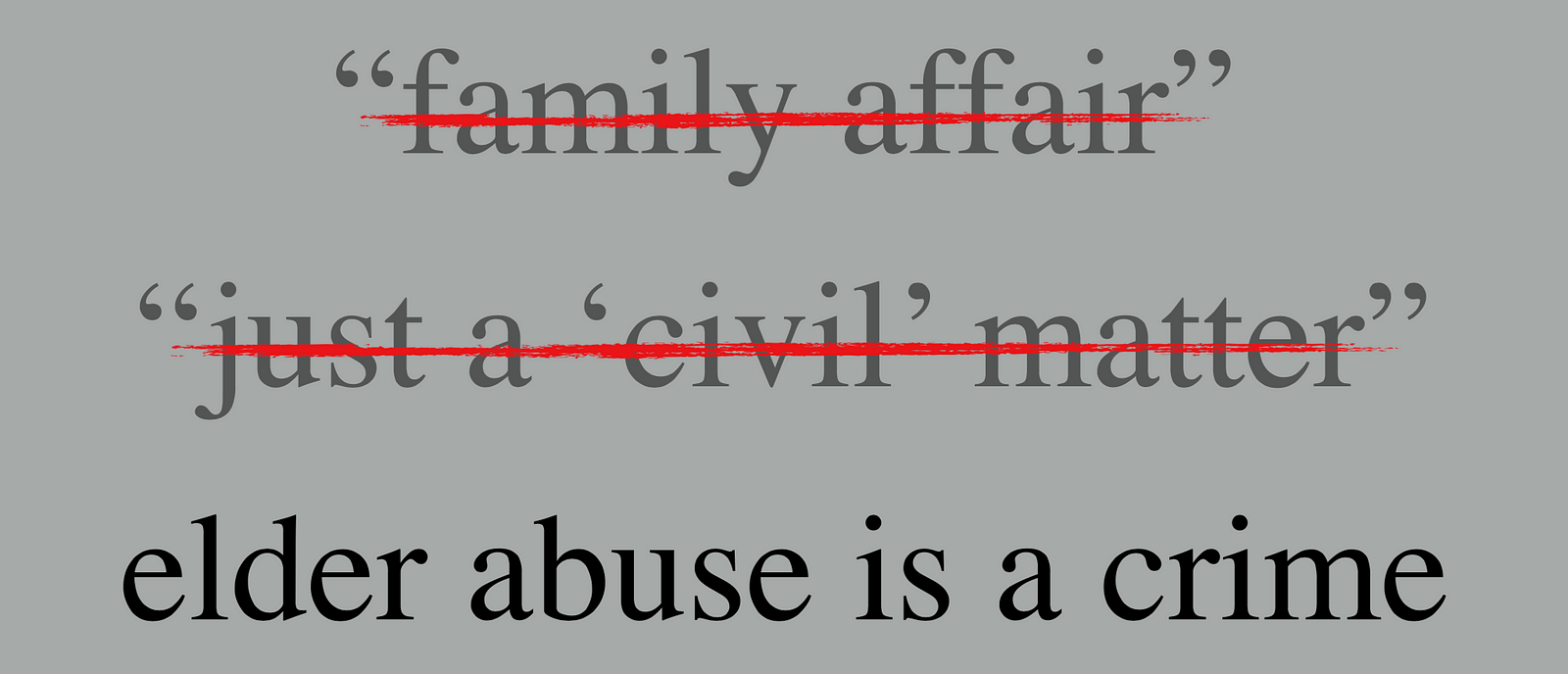
Criminal
For a concerned person, one of the greatest consternations is to hear, from authorities, that “elder abuse is not a crime.”
In
filing a guardianship petition for my grandmother, it was my naïve hope
was that this ‘family affair’ would be quietly settled.
But, for my grandmother, and millions of older adults across America, elder abuse is not a family affair, nor a ‘civil’ matter.
Elder
abuse is a crime; it needs to be treated as such so victims (and their
concerned supporters) are not re-victimized by perpetrators — and by
society’s lack of responsibility and response.
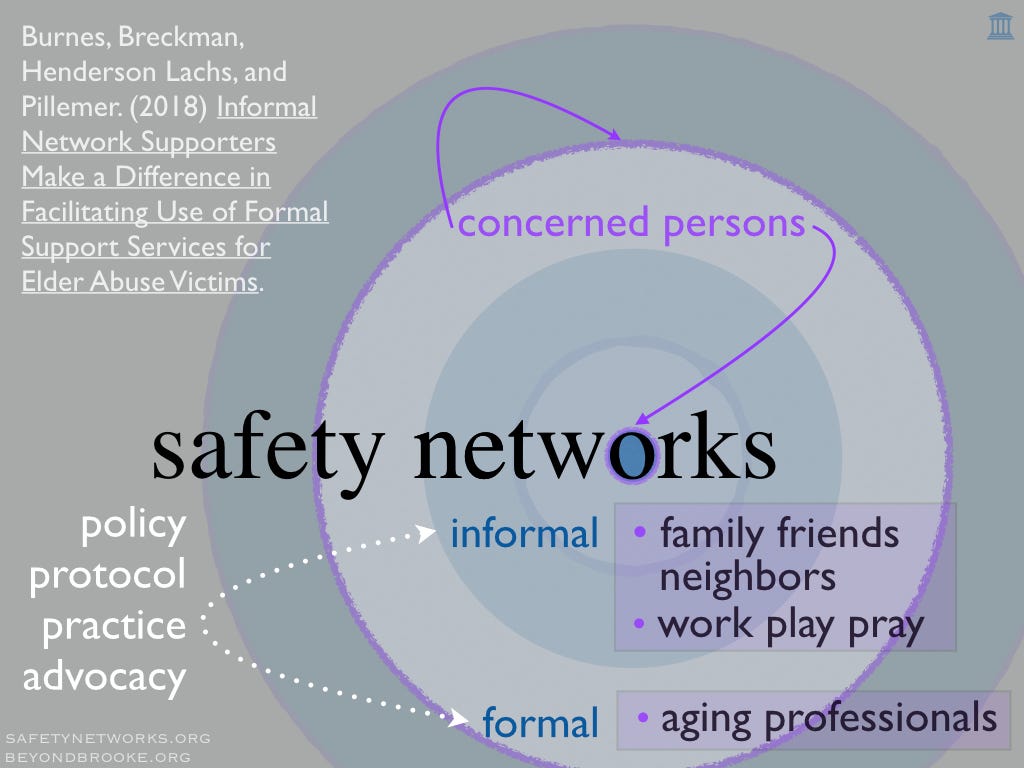
Concerned persons
As concerned persons…it’s our concern, we are concerned.
It’s our concern — it’s our moral and legal responsibility to stand up against abuse.
We are concerned; we are worried, anxious, even traumatized about the wellbeing of an older adult, our efforts to help, and ourselves.

Standing
Just as concern is compounded, many concerned persons do not feel they are a full ‘person.’ Let me explain.
My grandmother’s circle of support, her A-Team, felt fortunate.
I remain grateful to Liz Loewy—now, co-founder of Eversafe — at the time, lead prosecutor of the elder-abuse unit in the Manhattan District Attorney’s Office.
As
we entered the criminal justice system, Liz coupled compassion with
Kleenex, helping us to find our voice and tell our story — allowing us
to advance from taking a stand, and helping my grandmother, to taking the stand, in criminal court, for the greater cause of elder justice.
As concerned persons, we felt we had ‘standing.’
We felt both our concern and our selves, as persons, were recognized and respected.
Too
often, concerned persons bear the burden of concern, all the while
compromised; they feel they are not a full person as they are not seen
as having standing in the eyes of authorities.
This diminishes concerned persons, and our collective response to injustice.
As
recently as the 1980s, crime victims had no standing, no rights. Crime
victims were “nameless/faceless non-players in [the] criminal justice
system.” (NCVLI)
Concerned persons are not just the at the heart, they are the heart, of our connections with communities, older adults included.
When fighting crime, it’s time that concerned persons have standing, and our trust.
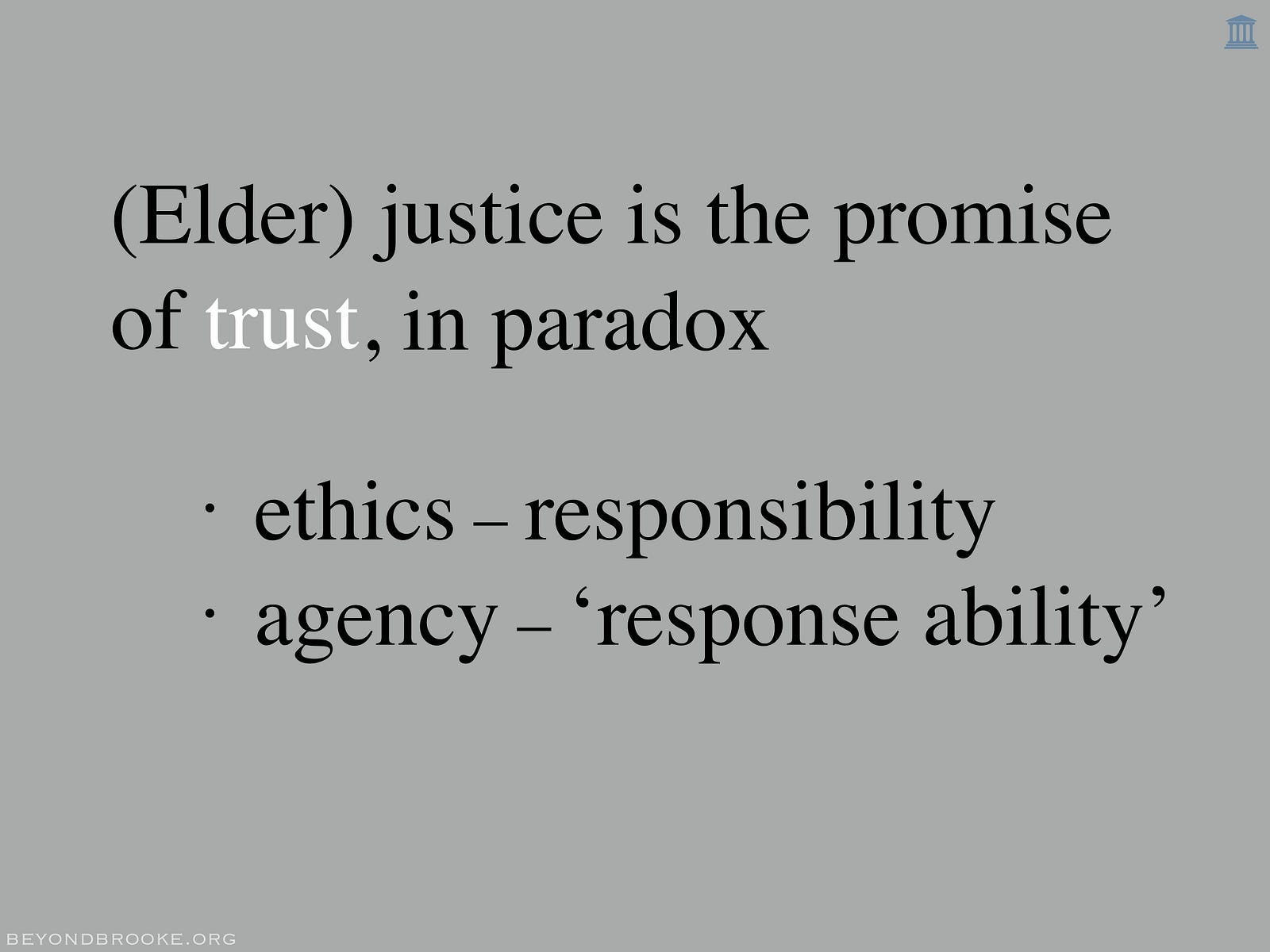
Trust twins
All-too-prevalent fraud and ‘pure’ elder financial exploitation aside, elder abuse is the betrayal of trust.
Elder justice is the promise of trust, in paradox.
For too long, I felt unworthy of my grandmother’s trust in me.
For trust is twofold and entails equity, with each element in equal measure.
As concerned persons know, trust involves the ‘trust twins’: ethics and agency.
Our
ethical responsibility must be matched by our ‘response ability’ — our
ability to respond — otherwise we feel helpless and hopeless.
As
elder-justice experts your agencies can help concerned persons achieve
agency — agency to act against abuse, agency toward self-care.
And,
for family members, agency to step beyond the affliction of
‘normalized’ trans-generational schema and power dynamics that set the
stage for abuse.

Full Circle
Our
effort to help my grandmother started with the idea that independently,
then collectively, we couldn’t image not doing whatever possible to
respect my grandmother’s goal and wish to spend her last days at her
country house…which she did, with family and friends — and free from
fear.
It was because of grandmother’s circle of support that she was able to come full circle.
Our ‘old age’ must never be considered a terminal stage, but one where life re-turns, full circle, cradled in trust.
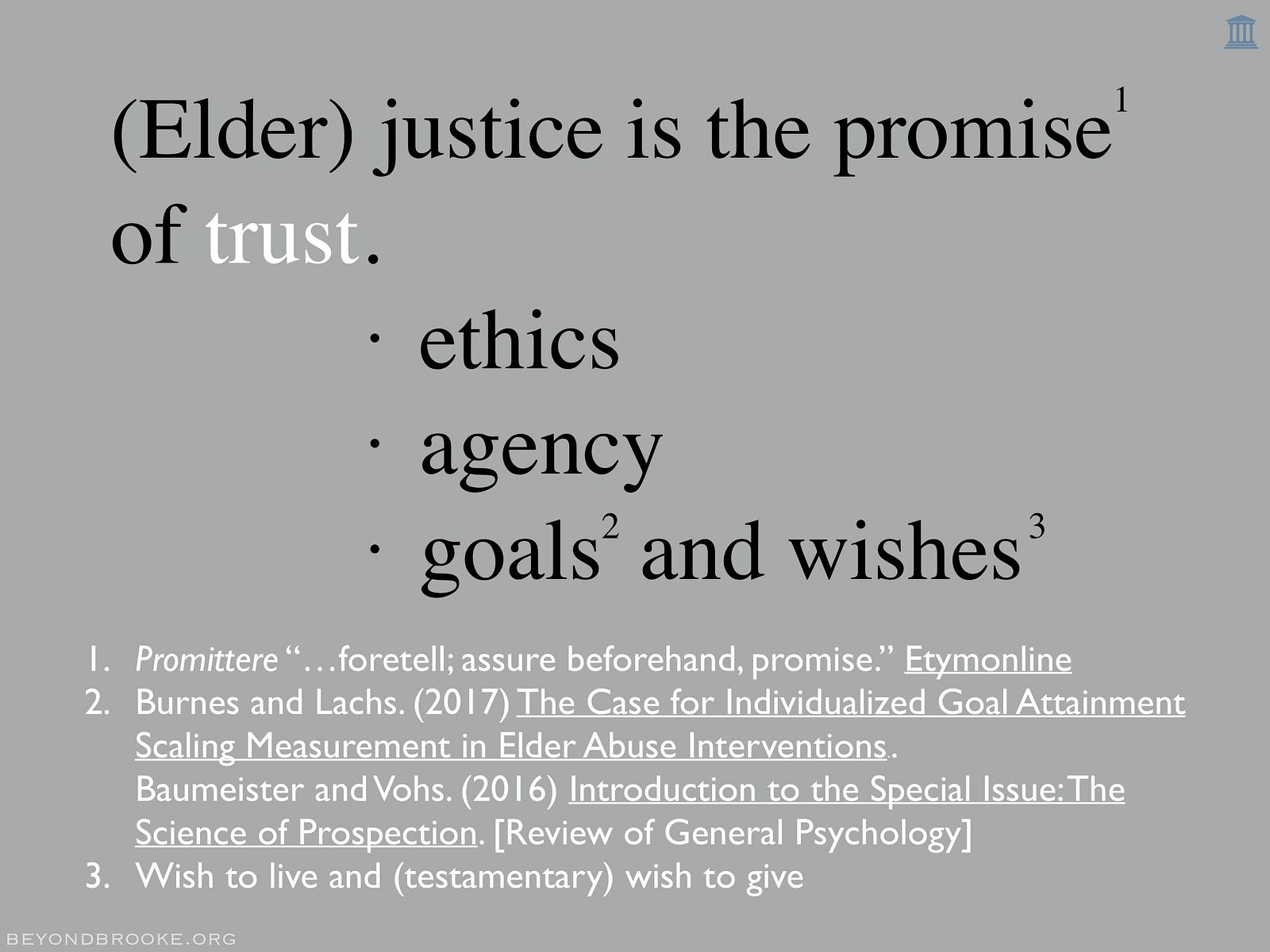
Trust triad
To return full circle, our promise of trust must extend beyond the ‘trust twins’ ethics and agency, to a ‘trust triad.’
Trust must include knowledge—knowledge of a senior’s goals and wishes, exemplified in David Burnes’ keynote.
This knowledge is possible…
- when we acknowledge seniors, and their strengths and needs;
- when seniors confide, with confidence, about their deepest fears and hopes;
- through prediction, pragmatic planning, and formative assessment;
- and when concerned persons can serve as proxy, so informed.
This is where David Burnes’ and Mark Lachs’ individualized goal attainment scaling measurement is so helpful for “protective response interventions” to elder abuse. (2017)
This person-centered community-based approach may also help toward proactive prevention, facilitated by the Elder Abuse Risk Assessment and Evaluation© tool (EARAE), developed by colleagues at Lifespan of Rochester, and other ‘forward-looking’ tools. In the future, these can be harnessed toward proactive prevention.
Difficult
conversations are critical to have with seniors; if we hesitate it may
be too late as we can’t trust our preferred presumptions as proxy,
uninformed.

NYCEAC Helpline
Before
I acted, I was filled with angst, frustration, and a sense of impotence
as I watched my grandmother’s world, which had spanned the globe and a
century, become so diminished and compromised by her only child, my
father.
Today,
reflecting on my grandmother’s sad circumstances, I wonder how many
trusted family, friends, and neighbors share a similar situation yet do
not know what to do or who to turn to.
I wish the New York City Elder Abuse Center helpline was available in 2006 when I needed help.
This
week, a concerned person called me up. She was in tears as she
chronicled her attempt to help her mother from abuse and exploitation.
She had no idea how to respond to her mother’s chronic abuse, quote,
“along with all the other responsibilities in my life.” She knew it was
going to get worse before it got better, with help.
Luckily
her mother is in New York. I could direct her to NYCEAC’s helpline,
which provides access to a trained service specialist who, in turn, “is
backed by a culturally competent, compassionate, and caring team of
professionals with many years of experience in the elder justice field.”
This includes many of you, here today.
I filed a guardianship petition (which was awarded, thanks in part to Ira Salzman, with us today) to help my grandmother and those trying to help her, her A-Team—concerned persons, all. We were lucky.
Many
concerned persons act alone, and feel alone — as isolated as seniors
they are trying to protect — just as they reach out to society for help.
Nancy
Oatts is a concerned person who had a singular journey no one would
wish to repeat, but plays out city- and country wide every day.
Nancy’s journey
is an inspiration to all of us, and her hard-learned insight informs
our next steps along the way, together—and our panel presentation, now.
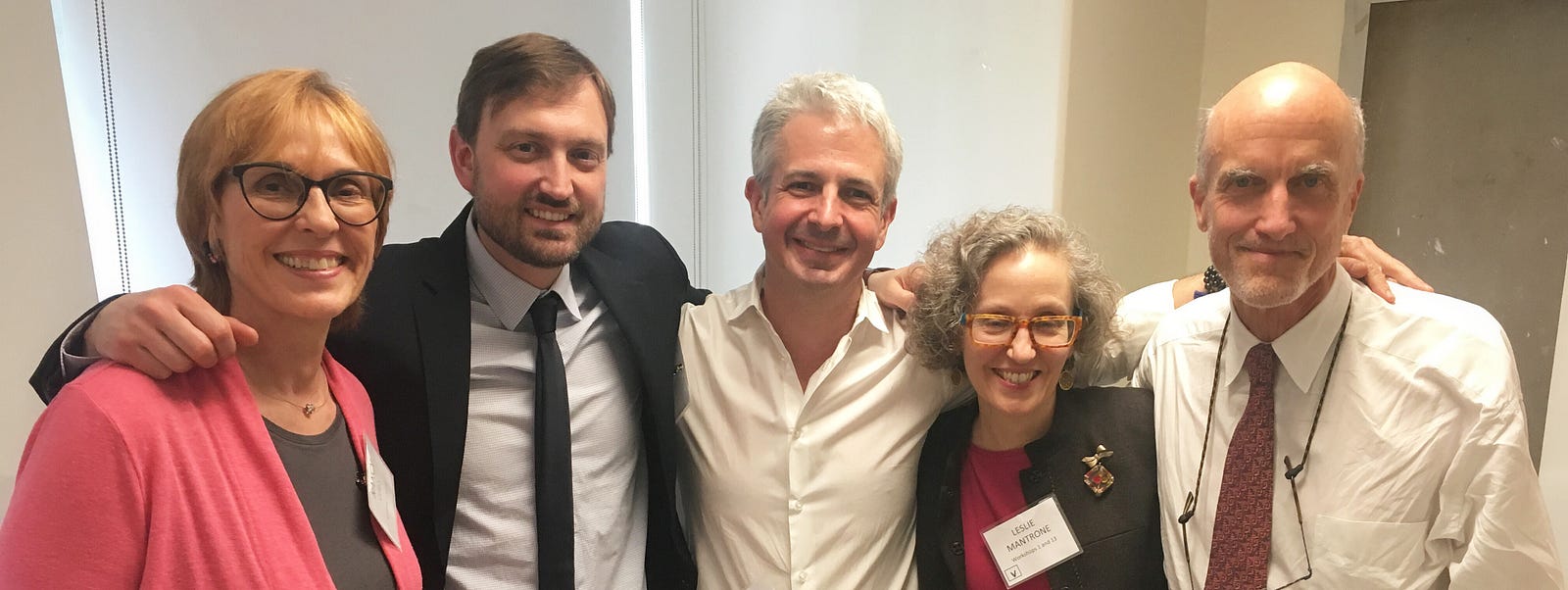
Remarks prepared for the 14th Annual NYC Elder Abuse Conference: Making a Measurable Difference — June 5, 2019
Family, Friends, and Neighbors in the Lives of Elder Abuse Victims: A population of concern and promise — This
workshop discusses research which led to creating the New York City
Elder Abuse Center’s (NYCEAC) Elder Abuse Helpline for Concerned
Persons, a non-emergency phone and email service. Insights from the
pilot year will facilitate a conversation about what more can be done
for concerned persons.
Presenters:
- Risa Breckman, LCSW, Director, Weill Cornell Medicine (WCM)/NYCEAC (represented by David Burnes)
- David Burnes, Ph.D., Assistant Professor at the University of Toronto
- Leslie Mantrone, LMSW, Helpline Specialist, WCM/NYCEAC
- Nancy Oatts, Nancy Oatts Design; member of the NYCEAC Helpline Advisory Board—a concerned person, as chronicled in My Neighbor Miss D
- Philip C. Marshall, Founder, Beyond Brooke; member of the NYCEAC Helpline Advisory Board—a concerned person
Full Article & Source:
Family, friends, and neighbors are at the heart (and the heart) of elder justice


No comments:
Post a Comment